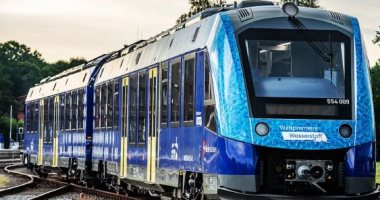The world’s first 100% hydrogen-powered passenger trains are currently in operation in Germany, generating electricity by mixing hydrogen within fuel cells housed on the train’s roof with oxygen, and emitting only water vapour in the process.
It is less loud, there is no diesel smoke when you arrive at the station, and there are no diesel emissions of nitrogen oxides, according to Bruno Margit of the French firm Alstom, which developed and built the trains for the German regional rail operator LNVG. According to fastcompany, Alstom trains run 1,000 kilometres (621 miles) before hydrogen tanks need to be replaced.
Some of the hydrogen used to power the line is produced using fossil fuels, but the train operator intends to collaborate with partners to manufacture hydrogen using local wind power instead, which produces no chimney carbon dioxide emissions and is better for the environment.
Because hydrogen trains can go longer before needing to refuel than a battery-powered electric train can on a single charge and can operate all day without refuelling, the business intends to phase out diesel completely.
We are certain that diesel trains will not be economically feasible in the future in order to do more to combat climate change, LNVG spokesperson Carmen Schwabel told German International Radio.
Trains are already a lower-carbon alternative for travel as compared to flying, but rail firms, like any other industry, will need to transition away from fossil fuels in order to fulfil global climate targets.
Alstom is also creating hydrogen trains for another German railway line, and the business is discussing the possibility of bringing some trains to North America.
In Germany, the first 100% hydrogen-powered passenger trains commenced service.

